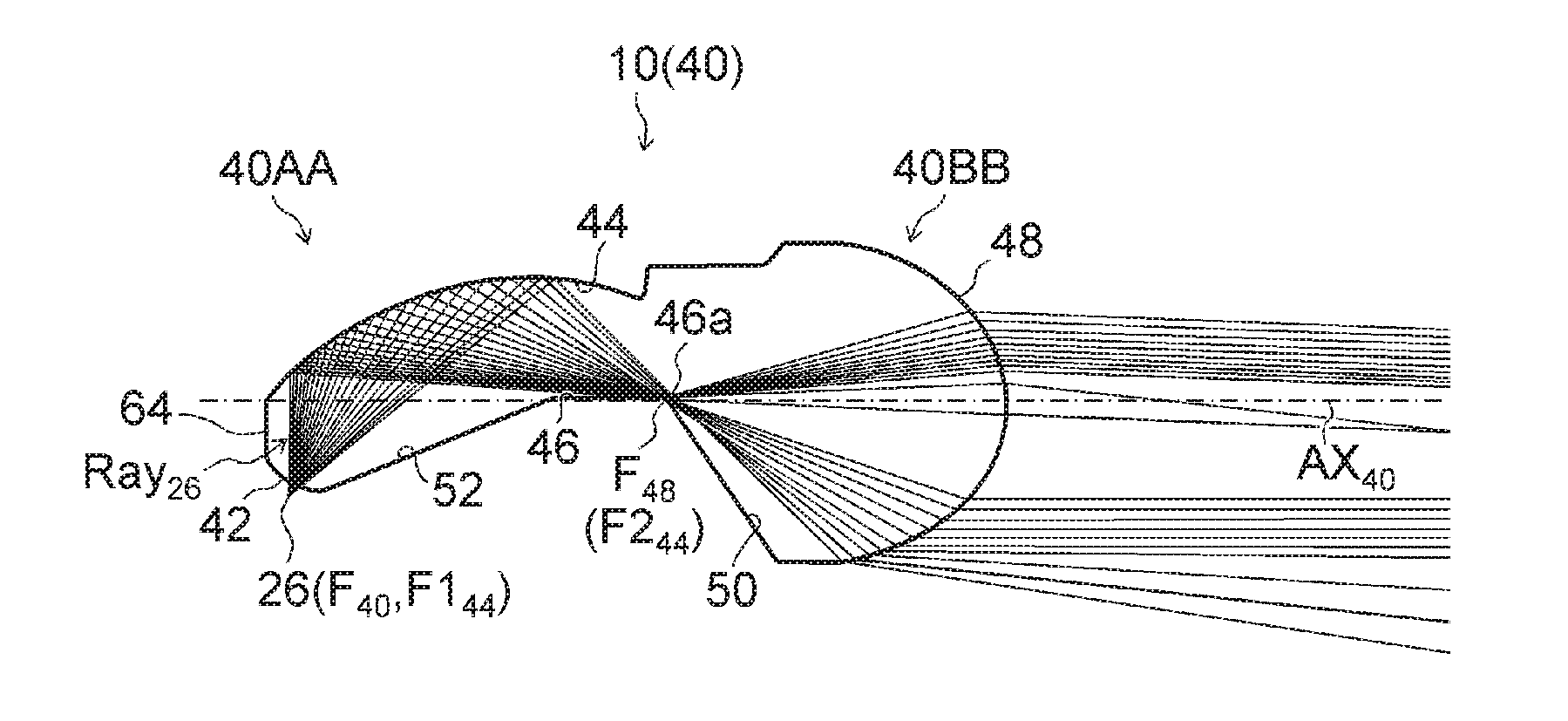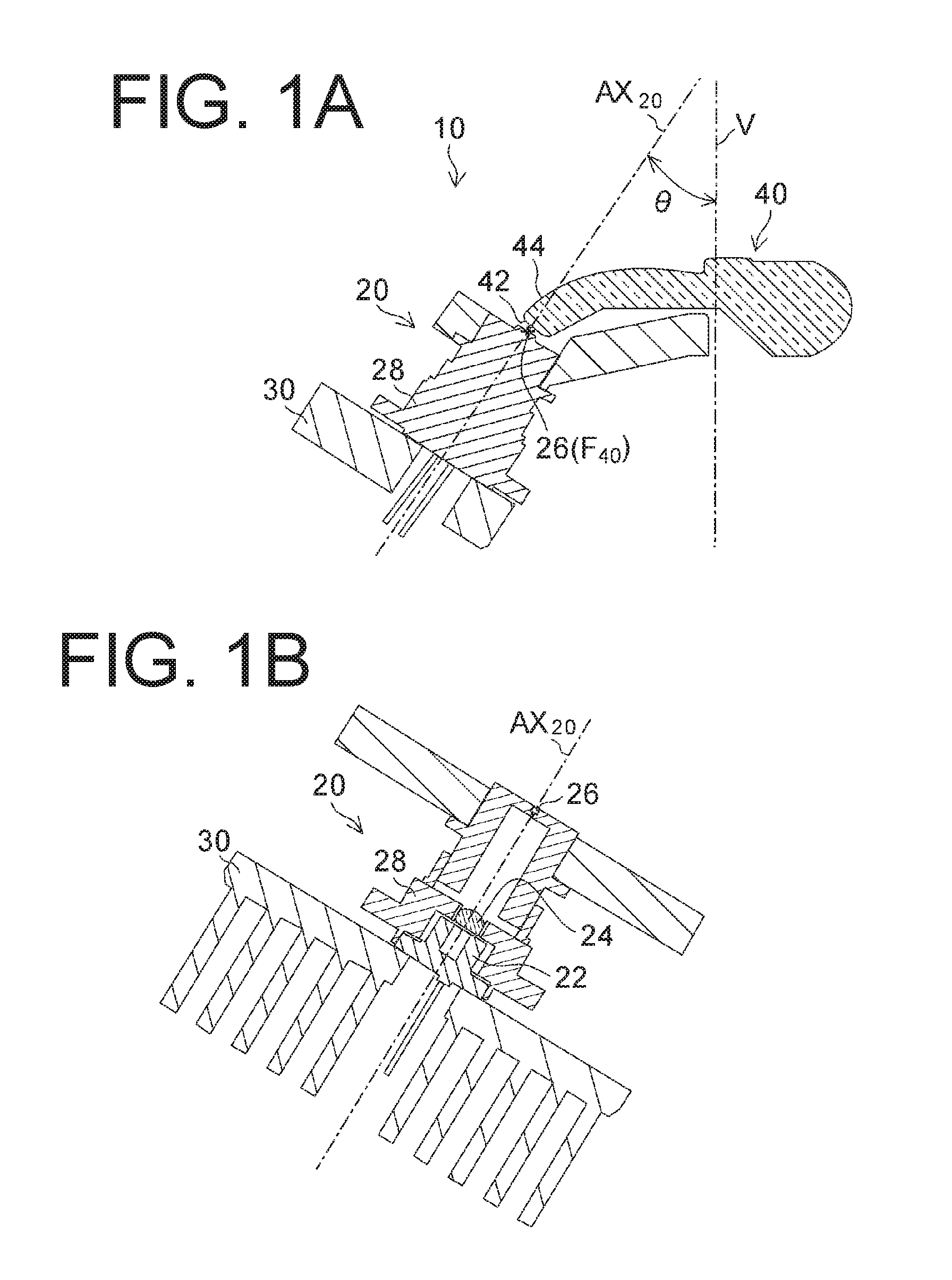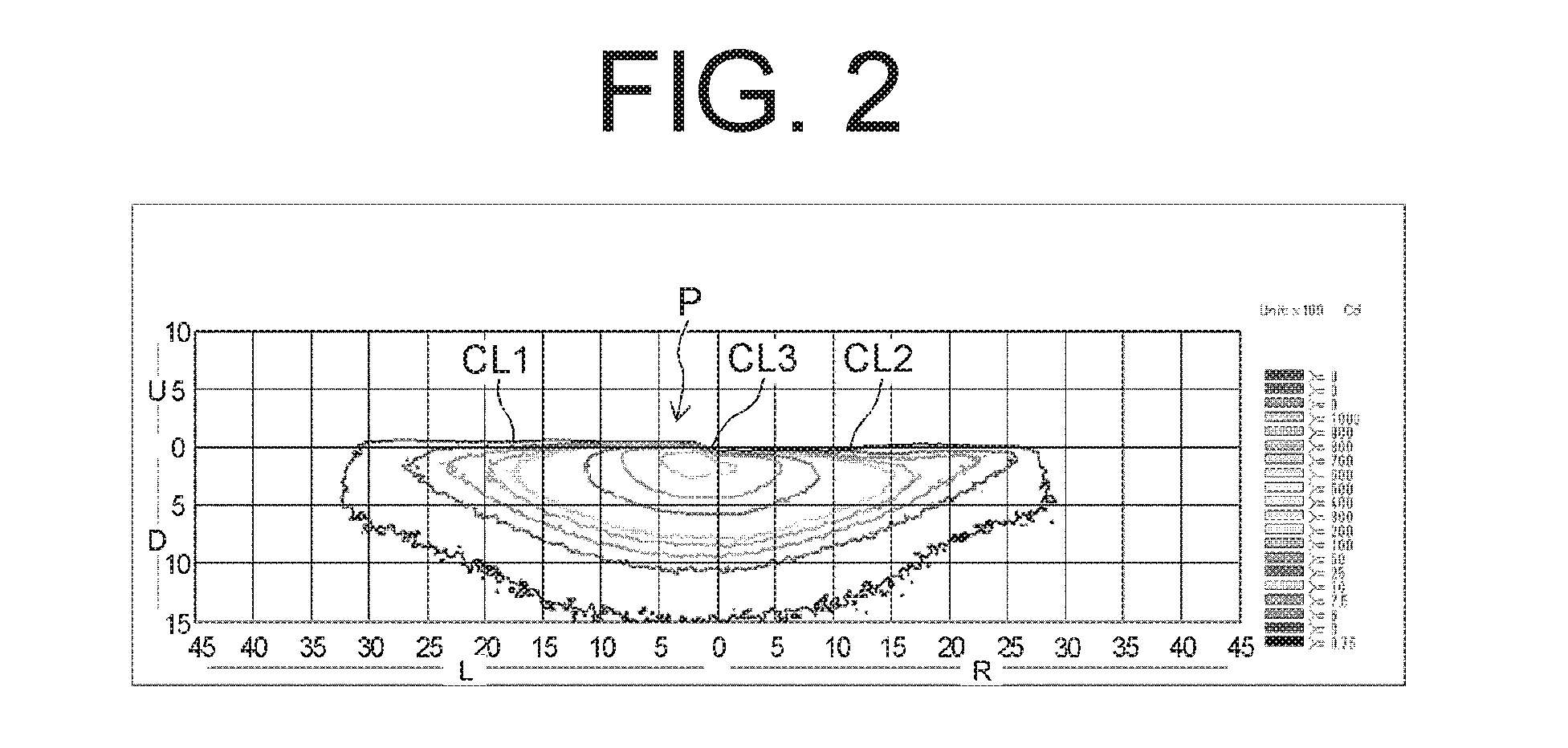Vehicle lighting unit
a technology for vehicle lighting and lighting units, applied in fixed installations, lighting and heating devices, lighting support devices, etc., can solve the problems of reducing the utilization and affecting the efficiency of luminous flux utilization
- Summary
- Abstract
- Description
- Claims
- Application Information
AI Technical Summary
Benefits of technology
Problems solved by technology
Method used
Image
Examples
example 1
[0072]Under conditions in which the semiconductor laser element 22 had an output of 3 W, the lens member 40 had the prism 56 disposed in the region A2 illustrated in FIG. 10, and the light emitting device 20 did not have any wavelength converting member 26, the laser light rays Ray22 emitted from the semiconductor laser element 22 and exiting through the light exiting surface 48 were confirmed in terms of its output and resulting light distribution pattern.
[0073]The results showed that the output of the laser light rays Ray22 emitted from the semiconductor laser element 22 and exiting through the light exiting surface 48 was 0.11 W and the light distribution pattern shown in FIG. 11B was formed on a virtual vertical screen.
example 2
[0074]Under conditions in which the semiconductor laser element 22 had an output of 3 W, the lens member 40 had the prism 56 disposed in the region A1 illustrated in FIG. 9, and the light emitting device 20 did not have any wavelength converting member 26, the laser light rays Ray22 emitted from the semiconductor laser element 22 and exiting through the light exiting surface 48 were confirmed in terms of its output and resulting light distribution pattern.
[0075]The results showed that the output of the laser light rays Ray22 emitted from the semiconductor laser element 22 and exiting through the light exiting surface 48 was 0.02 W and the light distribution pattern shown in FIG. 11C was formed on a virtual vertical screen.
[0076]The test conditions and obtained results are listed in Table 1.
TABLE 1Prism(Location)Output (to 3 W)Light Distribution PatternExample 1A2 (FIG. 10)0.11 W (3.67%)FIG. 11BExample 2A1 (FIG. 9)0.02 W (0.67%)FIG. 11CComparativeNone2.75 W (91.7%)FIG. 11AExample 1
[0...
example 3
[0081]Under conditions in which the semiconductor laser element 22 had an output of 3 W, the lens member 40 had the prism 56 disposed in the region A1 illustrated in FIG. 9, and the light emitting device 20 had the wavelength converting member 26, the light rays Ray26 emitted from the wavelength converting member 26 and exiting through the light exiting surface 48 were confirmed in terms of its light flux and the maximum light intensity in the resulting low beam light distribution pattern.
[0082]The results showed that the light flux of the light rays Ray26 emitted from the wavelength converting member 26 and exiting through the light exiting surface 48 was 254.8 lm and the maximum light intensity in the resulting low beam light distribution pattern was 13,150 cd. Further it was confirmed that the light flux utilization efficiency was 58.8% (when a not-illustrated outer lens was used).
TABLE 2Light FluxPrismMax LightUtilization(Location)Light Flux (lm)Intensity (cd)EfficiencyComparati...
PUM
 Login to View More
Login to View More Abstract
Description
Claims
Application Information
 Login to View More
Login to View More - R&D
- Intellectual Property
- Life Sciences
- Materials
- Tech Scout
- Unparalleled Data Quality
- Higher Quality Content
- 60% Fewer Hallucinations
Browse by: Latest US Patents, China's latest patents, Technical Efficacy Thesaurus, Application Domain, Technology Topic, Popular Technical Reports.
© 2025 PatSnap. All rights reserved.Legal|Privacy policy|Modern Slavery Act Transparency Statement|Sitemap|About US| Contact US: help@patsnap.com



